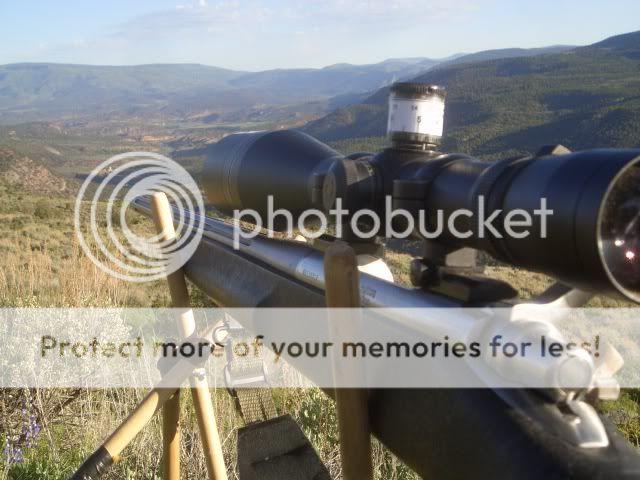You are using an out of date browser. It may not display this or other websites correctly.
You should upgrade or use an alternative browser.
You should upgrade or use an alternative browser.
BDC Turret knobs
- Thread starter Jody
- Start date
 Help Support Long Range Hunting Forum
Help Support Long Range Hunting Forum
Buffalobob, if you could, would you please email me the 2 different ones you have. [email protected].
Thanks, JimD
Thanks, JimD
azsugarbear
Well-Known Member
If BDC is the way you want to go, then be sure and take a look at http://www.kentonindustries.com.
Jon A
Well-Known Member
For those who missed the discussion in this thread, there is some good BDC info there.
On that note, here is something I'd like to add to the discussion that most here probably know, but some may not have thought about yet: How important, once again, high BC bullets are.
I know many here use PDA's in the field correcting for temp, pressure, etc as they go and that's really the only way to go for extreme ranges but I'd guess the vast majority here simply tape a drop chart to their stock or turret and go hunting. For those who are doing that, higher BC's are even more important.
I'm always telling people to use the highest BC bullets they can for LR and the biggest reason is wind drift—it's the hardest thing to estimate and compensate for, so the less you have the smaller your errors will be and BC has the biggest effect on drift.
Well, here's another one. The higher your BC, the smaller the effect any changes in conditions will make. Here's an example: At my "Montana Altitude" of 4400, say the temperature drops 30 degrees from the temperature at which my drop chart/BDC is perfectly calibrated.
My 240 SMK load (using only a BC of .67 for now) at 3010 fps will be off 5" at 1000 yds. A 180 AccuBond at 3400 will be off 6.2". A 168 TSX at 3500 will be off 9.4"—nearly double that of the 240 load. So, much like wind drift, high BC trumps high velocity/"flat shooting" every time. The error also goes up exponentially with range much like drift (in the above, the error at 800 yds is less than ½ the error at 1000 for each case).
Just one more reason higher BC bullets are easier to hit with at long range—especially if you aren't correcting for weather constantly in the field.
Of course, adding more powder behind any particular bullet always helps as well. A "typical short range" 308/30-06 load of the 168 TSX at 2800 will have an error of 15.9" at 1000 yds for the same 30 degree change in temp. As you can see, this makes the usefulness of a pre-made dropchart or BDC run out several hundred yards sooner than it will for a bigger gun.
Just some more points to ponder....
On that note, here is something I'd like to add to the discussion that most here probably know, but some may not have thought about yet: How important, once again, high BC bullets are.
I know many here use PDA's in the field correcting for temp, pressure, etc as they go and that's really the only way to go for extreme ranges but I'd guess the vast majority here simply tape a drop chart to their stock or turret and go hunting. For those who are doing that, higher BC's are even more important.
I'm always telling people to use the highest BC bullets they can for LR and the biggest reason is wind drift—it's the hardest thing to estimate and compensate for, so the less you have the smaller your errors will be and BC has the biggest effect on drift.
Well, here's another one. The higher your BC, the smaller the effect any changes in conditions will make. Here's an example: At my "Montana Altitude" of 4400, say the temperature drops 30 degrees from the temperature at which my drop chart/BDC is perfectly calibrated.
My 240 SMK load (using only a BC of .67 for now) at 3010 fps will be off 5" at 1000 yds. A 180 AccuBond at 3400 will be off 6.2". A 168 TSX at 3500 will be off 9.4"—nearly double that of the 240 load. So, much like wind drift, high BC trumps high velocity/"flat shooting" every time. The error also goes up exponentially with range much like drift (in the above, the error at 800 yds is less than ½ the error at 1000 for each case).
Just one more reason higher BC bullets are easier to hit with at long range—especially if you aren't correcting for weather constantly in the field.
Of course, adding more powder behind any particular bullet always helps as well. A "typical short range" 308/30-06 load of the 168 TSX at 2800 will have an error of 15.9" at 1000 yds for the same 30 degree change in temp. As you can see, this makes the usefulness of a pre-made dropchart or BDC run out several hundred yards sooner than it will for a bigger gun.
Just some more points to ponder....
G
Guest
Guest
If someone will send me the excel sheet I'll modify it for NF (BR and NXS) and post on one of my web sites so anyone can download them.
Quarterbore
Well-Known Member
BuffaloBob, i sent you an email. Please send BDC formats to [email protected]
Thank you, sir
Thank you, sir
ackiddblast
Active Member
- Joined
- Jul 24, 2005
- Messages
- 26
4ked Horn
Do you mind sending me an email of the program for the wraps, my email is [email protected].
thanks
kiddblast
Do you mind sending me an email of the program for the wraps, my email is [email protected].
thanks
kiddblast
